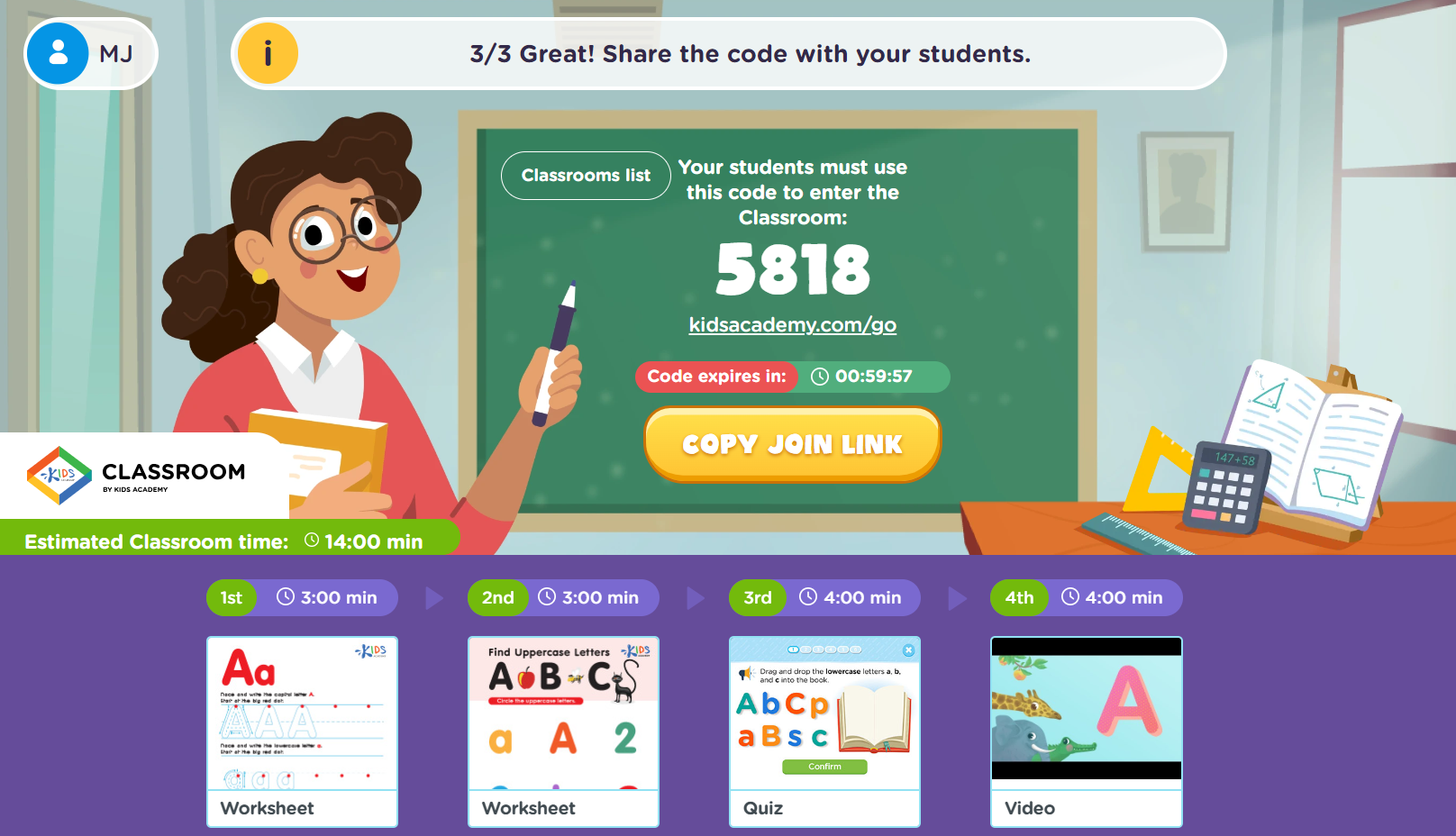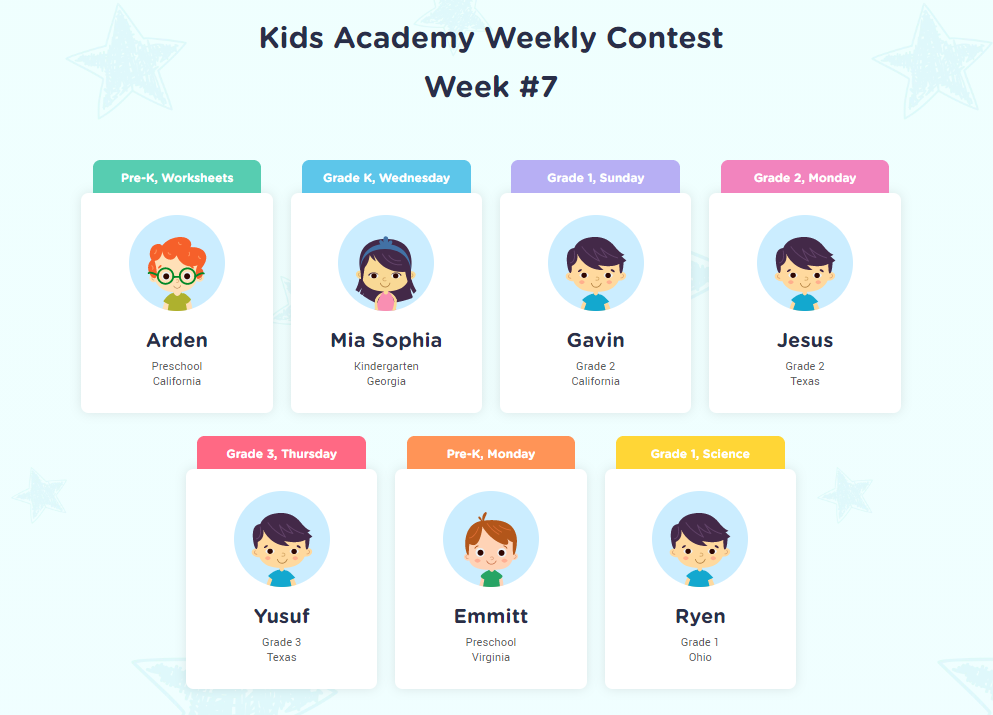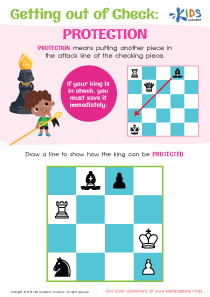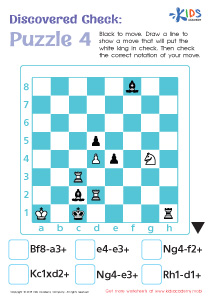Chess strategy learning Grade 1 Chess Worksheets
10 filtered results
-
From - To
Unlock your child's strategic thinking with our engaging Grade 1 Chess Strategy Learning Worksheets! Designed for young minds, these interactive and fun worksheets introduce essential chess concepts, boost problem-solving skills, and promote critical thinking. Young learners will enjoy mastering basic strategies and opening moves through colorful illustrations and kid-friendly exercises. Perfect for both classroom use and home practice, these worksheets create an enjoyable learning experience that fosters patience, planning, and foresight. Dive into the timeless game of chess and watch your child's cognitive abilities flourish with our expertly crafted resources! Explore today and unleash little grandmasters!


King and Queen Mate Strategy: Part 1 Worksheet
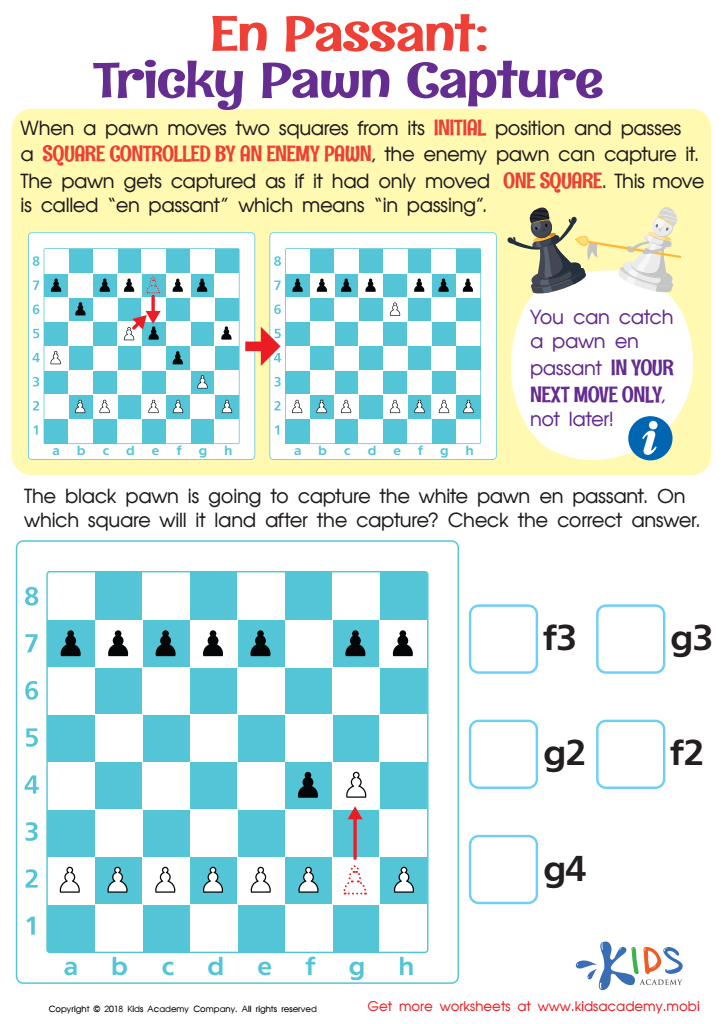

En Passant: Tricky Pawn Capture Worksheet


Two Rook Mate Strategy Worksheet


En Passant: Writing it Down Worksheet
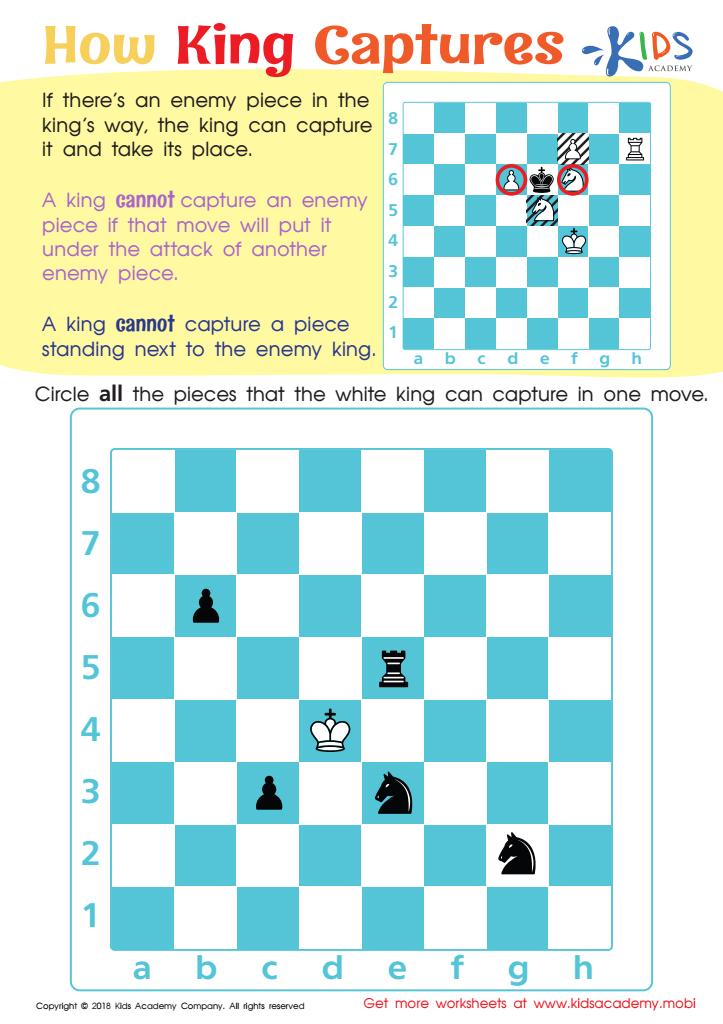

How King Captures Worksheet


En Passant Bingo Worksheet


What Is a Stalemate? Worksheet
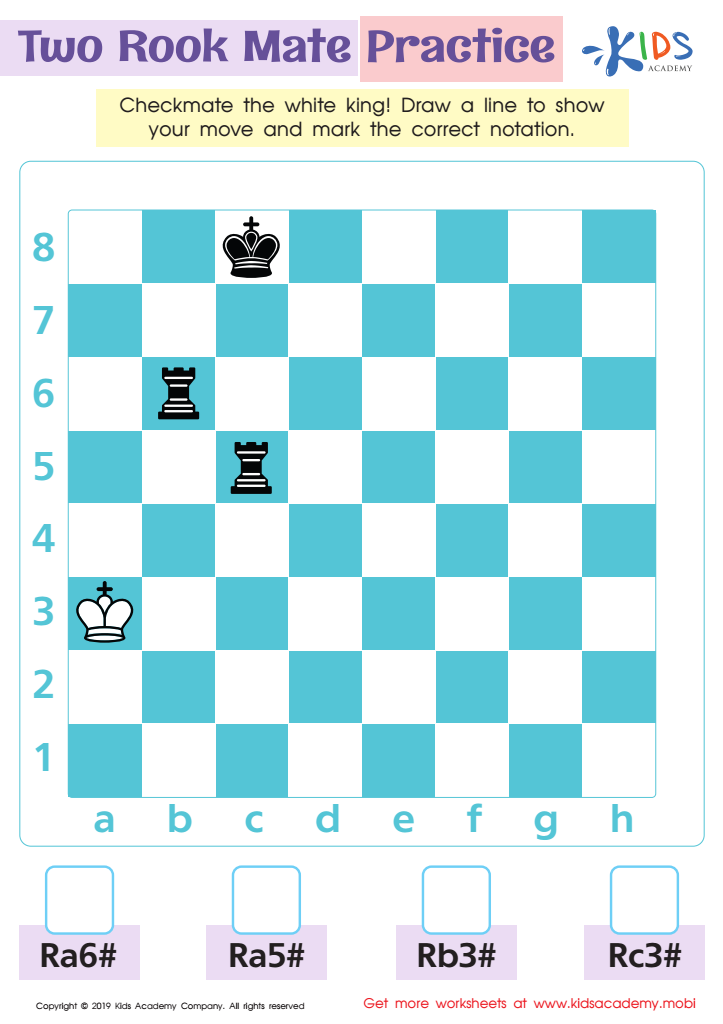

Two Rook Mate Practice Worksheet


Find Stalemate! Worksheet
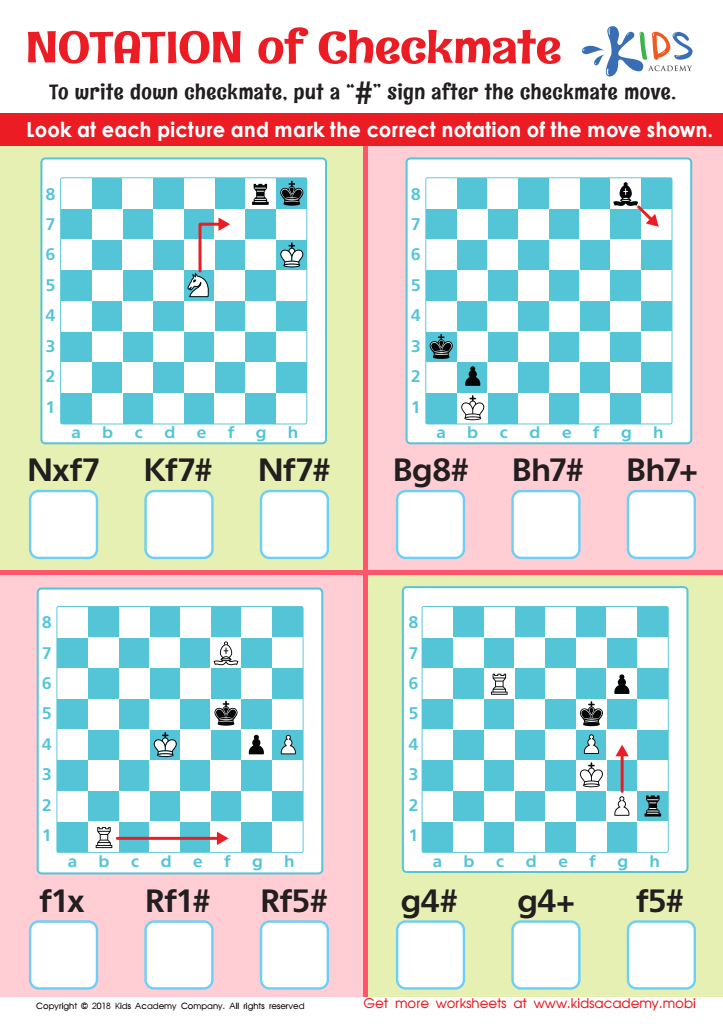

Notation of Checkmate Worksheet
Parents and teachers should care about introducing chess strategy to Grade 1 students due to its remarkable benefits for developing young minds. Chess is more than just a game; it is a powerful educational tool that fosters critical thinking, problem-solving skills, and concentration – all essential for a child's academic success and personal growth.
Learning chess strategies at a young age enhances cognitive abilities. Children who play chess regularly show improved memory, better planning skills, and advanced pattern recognition, as they have to visualize multiple moves ahead and consider various outcomes. This mental exercise strengthens their brain’s executive function, which is crucial for handling complex tasks and making informed decisions.
Chess also instills patience, perseverance, and strategic thinking. Young players learn the importance of thinking before acting, a valuable lesson in both academics and everyday life. They develop an appreciation for rules and fair play, which fosters self-discipline and respect for others.
Moreover, chess encourages social interaction and boosts self-esteem. Playing against peers or adults in a structured environment helps children develop a sense of sportsmanship and allows them to experience success and setbacks, teaching them resilience.
In conclusion, introducing Grade 1 students to chess strategies provides a foundation for lifelong cognitive benefits and equips them with vital skills that extend beyond the classroom.

 Assign to My Students
Assign to My Students







